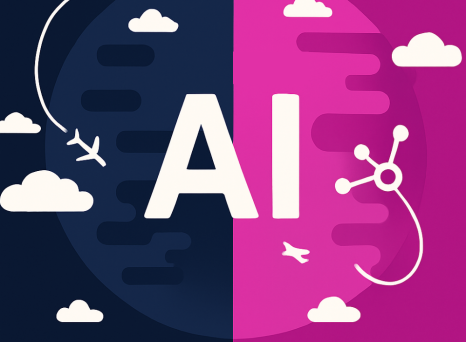Ask any executive team today about their AI strategy and you'll get a dozen different answers. Many are enthusiastic. Most are vague.
That’s not a criticism. It’s just where we are today in the hype cycle. Here is the truth I’ve been sharing with enterprise leaders lately:
Unless you’re in the business of building AI, you don’t need an AI strategy.
You need a strategy that is enabled by AI. AI is not a silver bullet. It is not a line item you can bolt onto a roadmap and call it transformation. In fact, AI is useless without clarity, structure, and adaptability underneath it.
What resilient organizations do differently
I’ve spent the last decade working with some of the most successful and disrupted enterprises in the world. The ones that thrive in complexity don’t bet on AI alone. They do three things very well:
- They have strategic focus. They know what they are trying to achieve and how they’ll measure success.
- They’ve built adaptive operating models. When they sense change is coming, they can shift direction fast.
- They use tools that align strategy with delivery. Without that connection, even the smartest AI becomes confusing and noisy.
This is the foundation for resilience. Without it, AI just adds speed to chaos.
From AI strategy to AI-enabled strategy
When companies first started investing in AI, many just chased the novelty. They funded pilots or proof-of-concept projects just to show they were doing something innovative. But in today’s economic environment, novelty gets you nowhere. AI investments need to drive real outcomes, and they need to do it quickly.
That is why the conversation has changed. It is no longer about building an AI strategy. It’s about using AI-enabled tools and systems to get sharper insights, reduce risk, and make faster, better decisions.
At the recent Planisware EMEA conference, I saw this in action. Leading organizations are not asking, “What can AI do?” They are asking, “How can AI help us reach our goals more effectively?”
Structure matters more than ever
The pace of change is not slowing down. In fact, I often tell teams, “Today is the slowest rate at which business will ever move.”
Let that sink in and ask, ‘What does that mean for how we lead?’
It means we need operating models designed for speed. It means we need strategy systems that allow for flexibility. And it means we need tools that support continuous decision-making. Strategic Portfolio Management, or SPM, plays a critical role here. For example;
- Only 39% of leaders say their company is good or excellent at implementing strategy despite 65% believe that they are good at crafting it
- Gartner predicts that 70% of digital investments will fall short without SPM. (Gartner, Top Trends for Strategic Portfolio Leaders for 2023, Kevin Rose, Rachel Longhurst, et al., 14 August 2023.)
- Accenture found that only 21% of companies use technology to shape strategy.
The opportunity gap is large, and so is the cost of delay.
AI won’t replace you. But it will change how you lead.
There is a popular line that says, “AI won’t take your job. But someone who knows how to use AI will.”
I would take it further. Leaders who know how to integrate AI into resilient systems will outperform those who chase one-off innovations.
If your organization can connect strategy to delivery, if you can adapt quickly and make sense of complex data, then AI becomes a multiplier. It helps you scale good decisions. It helps you move faster with confidence.
But if your systems are fragmented, if delivery and strategy are disconnected, or if AI is treated as an isolated project, then you will struggle to get value from it.
In the next wave of change, the edge will not come from being trendy. It will come from being resilient.
Watch the webinar replay with Adam Mattis “Building a Resilient Enterprise: Faster Pivots and Smarter Decisions with AI, SPM & SAFe’”



